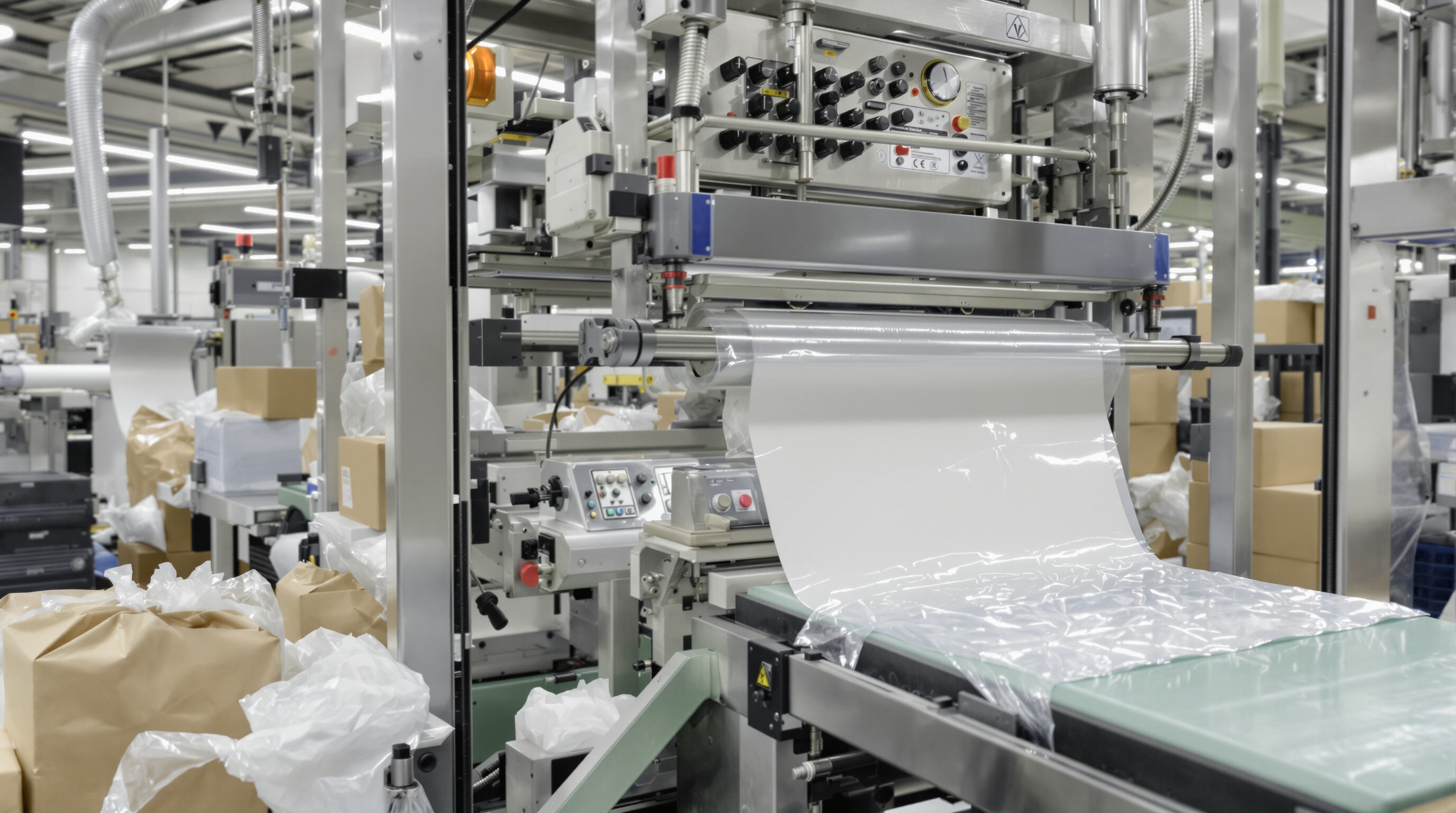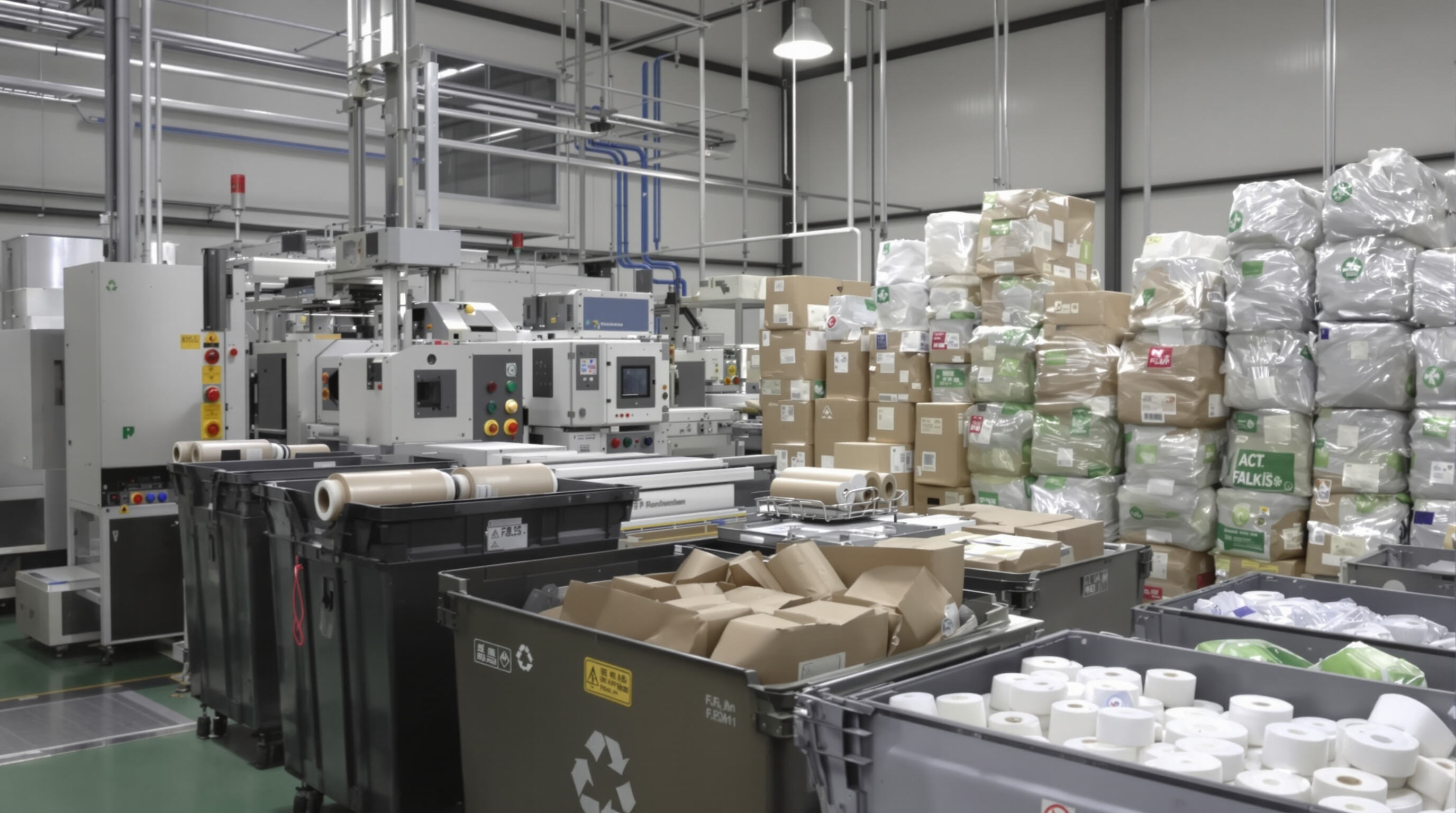How VFFS Machines Reduce Packaging Material Waste

What Is a Vertical Form Fill Seal (VFFS) Machine?
A Vertical Form Fill Seal (VFFS) machine constructs bags vertically from rolled film, fills them with products, and heat-seals the edges in a single continuous process. This eliminates dependency on pre-formed pouches, reducing excess material by forming packaging on-demand.
Eliminating Pre-Made Bags: The Efficiency of Film Rolls in Reducing Waste
Flexible film VFFS machines actually produce around 12 to maybe even 20 percent less waste compared to those pre-made bag systems, based on what various packaging studies have shown. The roll fed approach means companies don't need all that extra space for storing pre cut bags, plus it helps eliminate waste when bags get damaged or expire before use. When dealing with powders or granules specifically, these machines really shine because they can adjust the film width as needed during operation, which stops unnecessary material usage and saves money in the long run.
Precision Sealing and Cutting: Minimizing Excess Material Use
Modern VFFS systems employ laser-guided sealing jaws and servo-driven cutters that trim film with ±0.3 mm accuracy. This precision reduces overfill margins by up to 15% compared to manual adjustments, while automated tension control prevents film stretching and wasted material.
Comparison With HFFS Machines: Lower Waste Generation in VFFS Systems
Horizontal Form Fill Seal (HFFS) machines generate 23% more trim waste for similar products, as shown in 2023 packaging machinery benchmarks. VFFS technology’s vertical orientation allows gravity-assisted product placement, eliminating HFFS-style reorientation steps that often tear film or misalign seals.
Cost Savings Achieved Through VFFS Machine Integration
High-Speed Continuous Motion VFFS Machines and Lower Per-Unit Costs
Today's vertical form fill seal (VFFS) machines can crank out over 200 bags every minute, which really brings down packaging costs when compared to older semi-automated setups sometimes by as much as 40%. These machines take away all that tedious manual work with bags and they also make better use of the packaging film, so factories end up wasting less material without slowing down production. According to some research published by PMMI back in 2023, companies that switched to servo driven VFFS equipment saw their annual use of polyethylene film drop around 22%. That kind of savings adds up fast for manufacturers looking to cut expenses.
Labor and Material Cost Reduction: Data Insight from Industry Implementation
Switching to automated bag forming and product dispensing systems cuts down on labor needs by around 60 percent. Take one plant for example they saved about seven hundred forty thousand dollars each year after swapping out their old manual packaging lines for vertical form fill seal (VFFS) tech. The machines have these really precise sealing jaws controlled by servos that cut back on wasted film material. Plus there's this real time tension monitoring system that stops materials from tearing during production. These features together help reach those impressive material usage rates between 97 and 99 percent that we see throughout both food processing and pharmaceutical manufacturing operations today.
ROI and Payback Period Analysis for VFFS Equipment Upgrades
For most manufacturing operations, getting their money back on VFFS machines happens pretty quickly, usually between 12 to 18 months when looking at both labor costs and materials saved. According to research from last year on automated processes, companies of moderate size typically save around $310 thousand each year after implementing these systems. That means if they spend about $420k upgrading their equipment, they'll get that investment back in just over a year. Another look at the industry data from 2023 shows something interesting too: nearly eight out of ten businesses that switched to VFFS technology saw all their costs covered within two years of installation.
Balancing High Initial Investment with Long-Term Operational Savings
While advanced VFFS systems require $200k–$600k upfront, their 10–15 year lifespan delivers lifetime savings averaging $2.1M through:
- 30–50% lower energy use vs. older pneumatic models
- 70% reduction in maintenance costs through IoT-enabled predictive upkeep
- 15–20% annual film savings via AI-powered material optimization algorithms
This cost structure enables manufacturers to cut total packaging expenses by 18–34% over five years according to 2024 packaging lifecycle assessments.
Optimizing VFFS Performance Through Automation and Smart Features
Automatic Film Splicing and Gas Flushing: Reducing Downtime and Waste
Today's VFFS machines come equipped with automatic film splicers that sense when a roll is running low and connect fresh film while keeping the line moving. No need for workers to stop everything just to swap out rolls anymore. Back in the day, those manual changes used to eat up around 8 to 12 minutes every hour on older equipment. And let's not forget about those gas flushing units either. They knock out oxygen from packaging at least 25% quicker compared to what people could do by hand. All these improvements mean less wasted product since operations stay running nonstop and seals hold up better under pressure.
Real-Time Monitoring and Smart Controls for Consistent Efficiency
The latest IoT sensors combined with PLC interfaces give manufacturers much better insight into how their VFFS machines are performing. We're talking about things like tracking small changes in film tension down to half a Newton and monitoring when seal temperatures start to drift. According to recent data from the Packaging Automation Report released in early 2024, facilities that have implemented these intelligent control systems report around 99.2% uptime. These systems work by making automatic adjustments to servo motor speeds and aligning cutting blades while the machines are actually running. The benefit? Less waste from materials getting used up unnecessarily when machines aren't operating at their best settings.
Calibration and Setup Best Practices for Maximum Output
Keeping film guiding systems and heat sealers properly calibrated makes sure they stay within about 2mm accuracy over thousands of cycles, which cuts down on those annoying film tears and package alignment issues. When technicians follow automated calibration procedures instead of doing everything manually, they save roughly 40% of their setup time. And there's something else worth mentioning too. Some smart diagnostic tools powered by artificial intelligence can actually spot problems with bearings or encoders up to three days before they fail completely. All these maintenance practices help vertical form fill seal systems hit impressive material efficiency rates around 98.6%, even when running at blistering speeds of over 200 pouches per minute straight through production shifts.
VFFS Technology’s Contribution to Sustainable and Circular Packaging

Vertical Form Fill Seal or VFFS machines are becoming really important for cutting down on waste in today's packaging world. These machines let manufacturers create packages with fewer materials without sacrificing strength. Some research indicates that VFFS systems can cut material use by around 30% when compared to those bulky rigid packaging options. Looking at recent data from a 2024 lifecycle analysis, we find that these VFFS processes actually use about 22% less energy overall and produce roughly 40% fewer emissions than older methods such as using pre-made pouches. The numbers tell us something significant about how this technology is changing the game for sustainable packaging solutions.
VFFS technology's ability to work with both recyclable and biodegradable films really boosts adoption of circular economy ideas across industries. Manufacturers are now finding ways to incorporate compostable materials into their fast moving packaging operations without slowing things down much. One company reported cutting about 120 tons of plastic waste each year from just one plant location alone. The trend makes sense when we look at what's happening in the market too. The North American VFFS sector seems headed toward somewhere around $5.3 billion in value by mid-2030s as businesses increasingly focus on greener material choices for their products.
Key environmental advantages include:
- Precision material allocation: Real-time film optimization reduces trim waste by 15–18%.
- Closed-loop compatibility: Over 78% of VFFS-produced flexible packaging can enter recycling streams vs. 42% for thermoformed alternatives.
- Carbon footprint reduction: Automated gas flushing systems lower CO₂ consumption by 25% compared to manual methods.
By balancing efficiency with eco-design flexibility, VFFS technology directly supports 63% of the UN’s Sustainable Development Goals for industrial systems—a transformative leap toward waste-free packaging ecosystems.
Frequently Asked Questions (FAQ)
What does a VFFS machine do?
A VFFS machine constructs bags from rolled film, fills them, and seals the edges in a continuous process, reducing packaging material waste.
How does VFFS technology reduce waste compared to HFFS machines?
VFFS machines generate less trim waste due to their vertical orientation, which allows for gravity-assisted product placement, eliminating film misalignment.
What are the environmental benefits of using VFFS machines?
VFFS machines offer key benefits like reduced material use, better recycling compatibility, and lower carbon footprint compared to older packaging methods.

